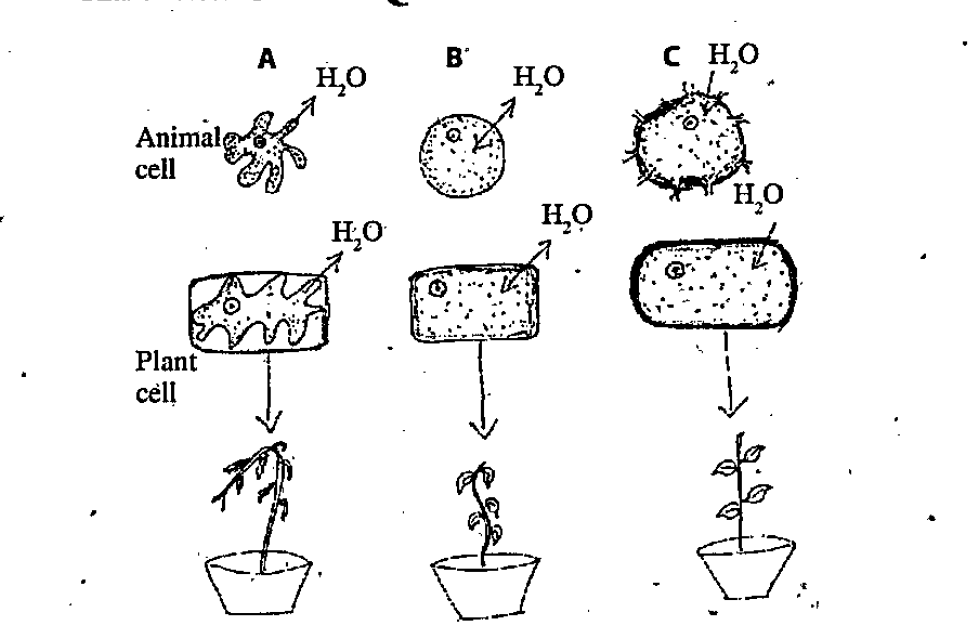 Osmotic effect on plant cell and animal cells are shown here, when which is placed in different types of solutions.
a. By observing the diagrams, identify the types of solutions in $\mathbf{A}, \mathbf{B} \& \mathbf{C}$.
b. What are the fate of these cells?
c. Write the observational changes on given potted plants. Give reasons.
Osmotic effect on plant cell and animal cells are shown here, when which is placed in different types of solutions.
a. By observing the diagrams, identify the types of solutions in $\mathbf{A}, \mathbf{B} \& \mathbf{C}$.
b. What are the fate of these cells?
c. Write the observational changes on given potted plants. Give reasons.
a. $A=$ Fypertonic solution $\mathrm{B}$ - Isotonic solution C-Hypotonic solution b. b. A - Exosmosis takes place. Animal cell and plant cell become flaccid or shrinked. $\mathrm{B}$ - No net móvernent of water from or to the cell. C - Endosmosis takes place. Animal cell turgid and burst out. Plant cell turgid but not burst. c. A - Wilted due to loss of water by exosmosis. $\mathrm{B}$ - Not turgid because concentration of solute inside and outside the plant cell balancęs. A.A C-Turgid and fresh due to endosmosis.
Similar Practice Problems
- Question 1 - Select One
A RBC and a plant cell (with thick cell wall) are placed in distilled water. The solute concentration is the same in both the cells. What changes would be observed in them
ABoth plant cell and RBC would not undergo any changeBThe RBC would increase is size and burst while the plant cell would remain about the same sizeCThe plant cell would increase in size and burst while the RBC would remain about the same sizeDBoth plant cell and RBC would decrease in size and collapse
Similar Questions
A RBC and a plant cell (with thick cell wall) are placed in distilled water. The solute concentration is the same in both the cells. What changes would be observed in them
View SolutionThe diagram given below represents a plant cell after being placed in a strong sugar solution . Study the diagram and answer the questions that follow:
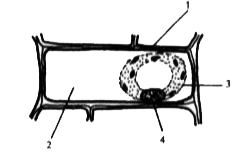
What is the state of the cell shown in the diagram?View SolutionThe diagram given below represents a plant cell after being placed in a strong sugar solution . Study the diagram and answer the questions that follow:

State any two features of the above plant cell which is not present in animal cells.View SolutionGiven below are diagrams of plant cells as seen under the microscope after being placed in two different solutions :
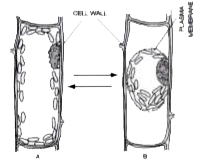
What is the technical term for the condition of :
(1) Cell A (2) Cell B?View SolutionFind the solution A,B and C in which different plant cells are placed
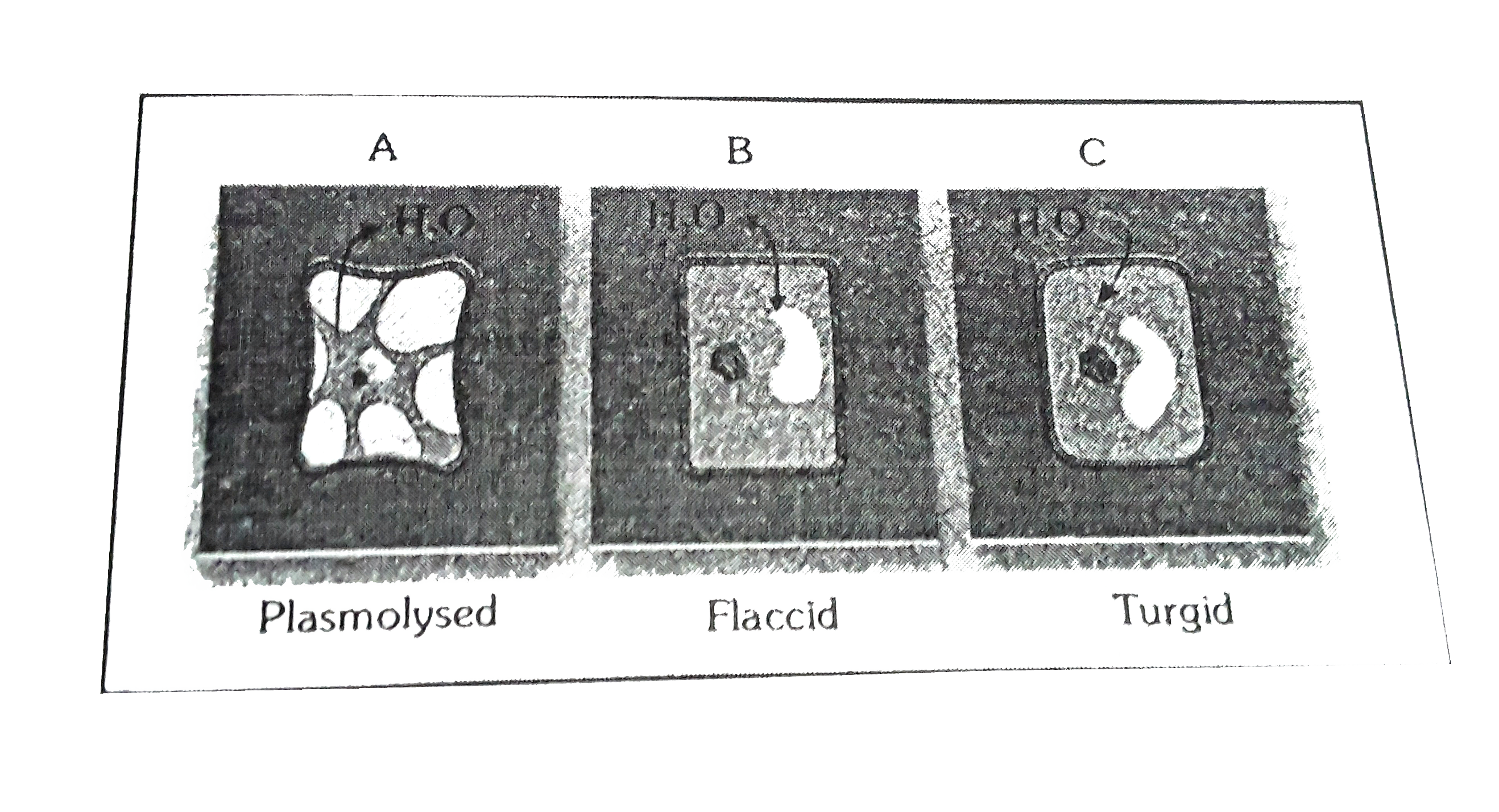 View Solution
View SolutionFind the solution A,B and C in which different plant cells are placed
 View Solution
View Solution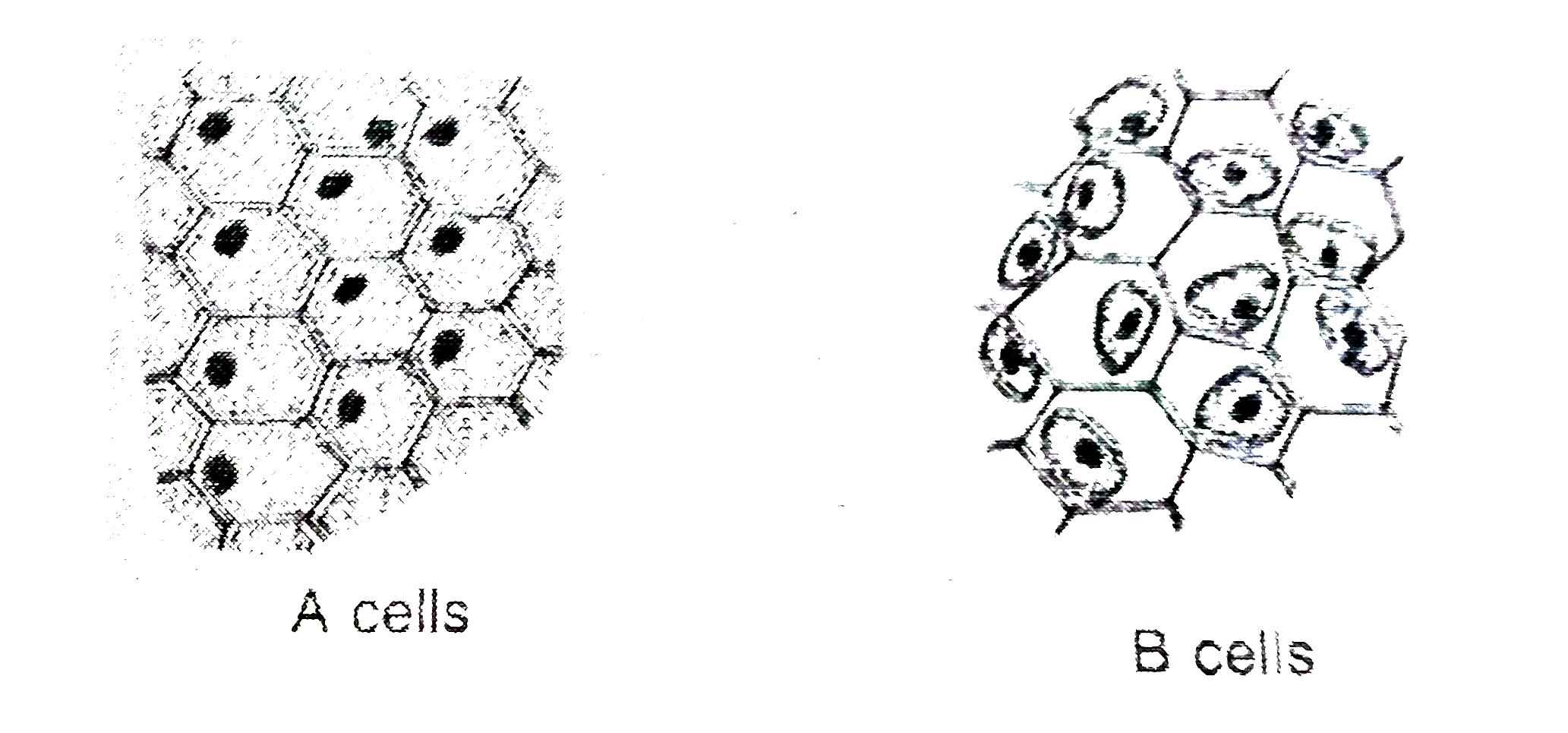
(a) Identify A- and B-cells.
(b) What will happen if B-cells are kept in hypertonic solution ?
(c ) What will happen if A cells are kept in hypertonic solution ?View SolutionGiven below are diagrams of plant cells as seen under the microscope after being placed in two different solutions :

Under what conditions in the soil will root hair cell resemble : (1) Cell A (2) Cell B?View SolutionGiven below are diagrams of plant cells as seen under the microscope after being placed in two different solutions :
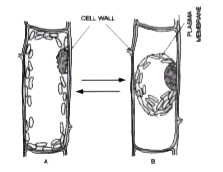
From the solutions given in brackets (water, strong sugar solution , 1% salt solution) name the solution into which :
(1) Cell A (2) Cell B was placed before being viewed under the microscope.View Solution

